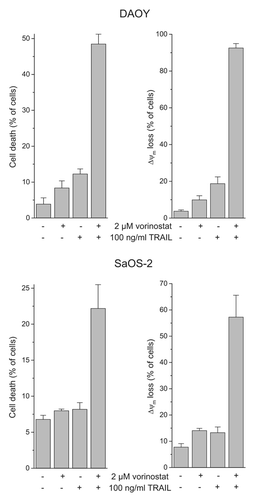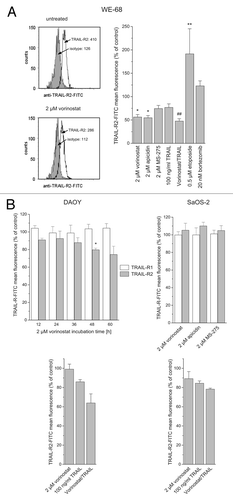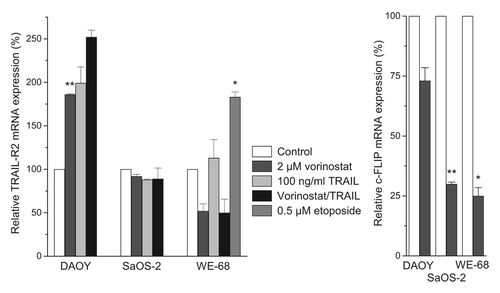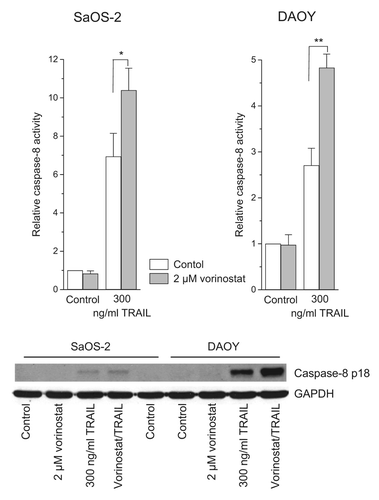Figures & data
Figure 1. Vorinostat and TRAIL cooperate in inducing cell death and Δψm loss in DAOY and SaOS-2 cells. Four hours after administration of vorinostat, cells were exposed to TRAIL for another 48 h. Cell death and Δψm dissipation were determined by flow cytometric analyses of propidium iodide uptake and DiOC6(3) staining, respectively. Means ± SEM of each three separate experiments are shown.

Figure 2. HDACi do not upregulate TRAIL-R cell surface expression in childhood tumor cells. Cells were treated with agents for 24 h or for the indicated times and stained with TRAIL-R antibodies or isotype control. TRAIL-R cell surface expression was determined by flow cytometric analysis of viable cells. TRAIL-R mean fluorescence is depicted as percentage of untreated cells after calculation of the mean fluorescence intensities of anti-TRAIL-R-stained cells divided by isotype-matched IgG-stained cells; means ± SEM of each 3 experiments are shown (treatment vs. control: *p < 0.05, **p < 0.01; vorinostat/TRAIL vs. TRAIL: ##p < 0.01).

Figure 3. Vorinostat alters TRAIL-R2 and c-FLIP mRNA expression in childhood tumor cells. Cells were exposed to agents for 24 h. TRAIL-R2 and c-FLIP mRNA expression levels were determined by real-time RT-PCR and normalized to β-2-microglobulin mRNA levels. Means ± SEM of each two separate measurements are shown (*p < 0.05, **p < 0.01).

Figure 4. Vorinostat potentiates TRAIL-induced caspase-8 activity in childhood tumor cells. Four hours after administration of vorinostat, cells were exposed to TRAIL for another 2 h. Caspase-8 activity was determined using the fluorogenic substrate Ac-IETD-AFC; relative caspase-8 activities are the ratio of treated cells to untreated cells. Means ± SEM of each 3 separate measurements are shown (*p < 0.05, **p < 0.01). Caspase-8 cleavage, i.e., the subunit p18, was detected by immunoblotting using anti-cleaved caspase-8 antibody.
